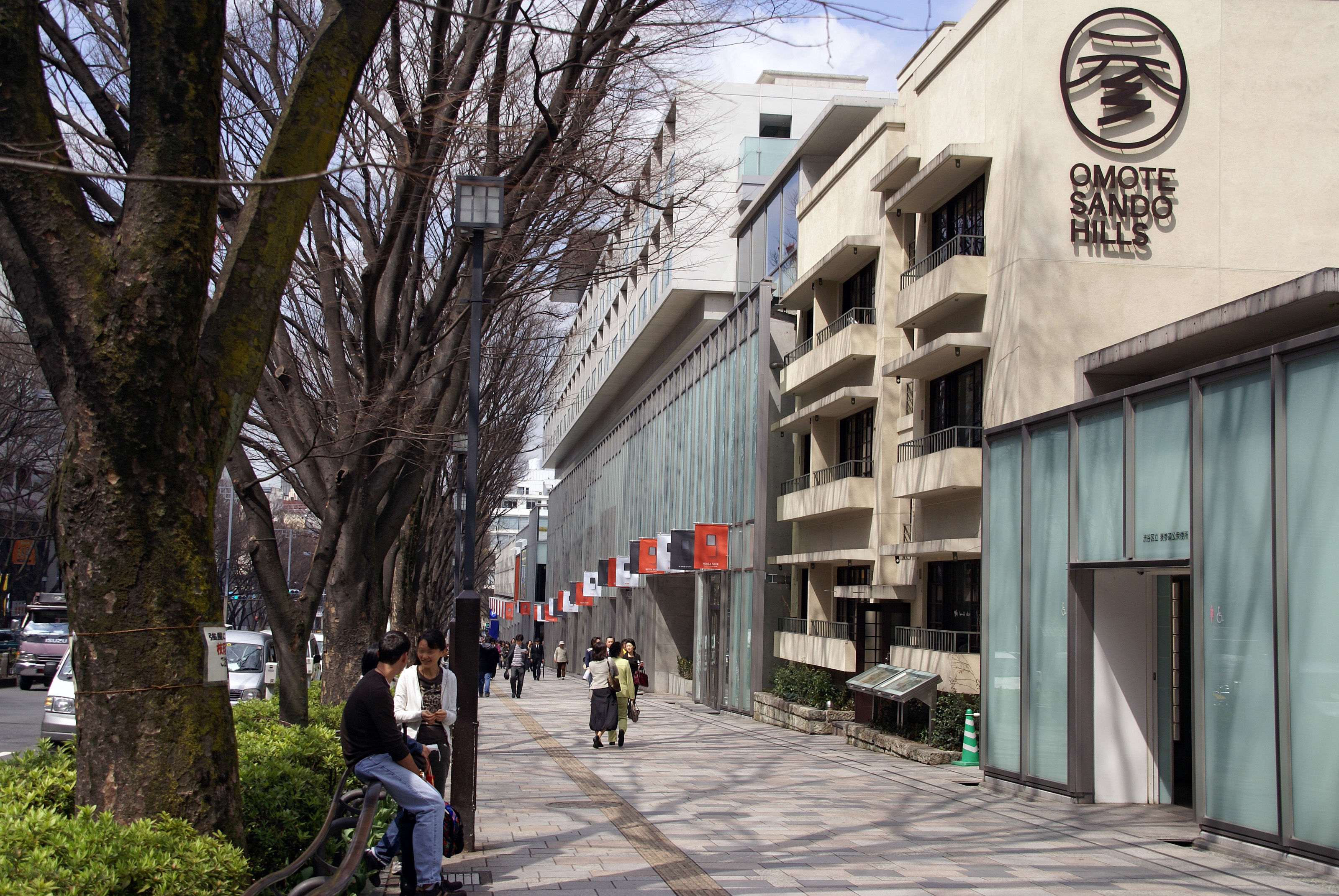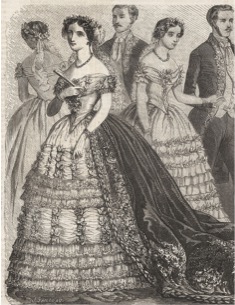|
Alternative Fashion
Alternative fashion or Alt fashion is fashion that stands apart from mainstream commercial fashion. Alternative fashion includes the fashions of specific subcultures such as emo, scene, goth subculture, hip hop, cyberpunk, kawaii, cottagecore, goblincore, 70's core, and Lolita fashion; however, it is not limited to these. In general, alternative, or 'alt', fashion does not conform to widely popular style trends of the times that have widespread popularity. It may exhibit itself as a fringe style – extremely attention-grabbing and more artistic than practical – but it can also develop from anti-fashion sentiments that focus on simplistic utilitarian drives (e.g.: grunge fashion, which was largely based around comfort and availability). Historical and sociological perspectives Alternative fashion is often considered a modern concept but it, and the concept of subculture it is often related to, have existed for centuries. As covered in Ken Gelder's exploration of the his ... [...More Info...] [...Related Items...] OR: [Wikipedia] [Google] [Baidu] |
Fashion
Fashion is a form of self-expression and autonomy at a particular period and place and in a specific context, of clothing, footwear, lifestyle, accessories, makeup, hairstyle, and body posture. The term implies a look defined by the fashion industry as that which is ''trending''. Everything that is considered ''fashion'' is available and popularized by the fashion system (industry and media). Given the rise in mass production of commodities and clothing at lower prices and global reach, sustainability has become an urgent issue among politicians, brands, and consumers. Definitions The French word , meaning "fashion", dates as far back as 1482, while the English word denoting something "in style" dates only to the 16th century. Other words exist related to concepts of style and appeal that precede ''mode''. In the 12th and 13th century Old French the concept of elegance begins to appear in the context of aristocratic preferences to enhance beauty and display refinement, a ... [...More Info...] [...Related Items...] OR: [Wikipedia] [Google] [Baidu] |
Heteronormativity
Heteronormativity is the concept that heterosexuality is the preferred or normal mode of sexual orientation. It assumes the gender binary (i.e., that there are only two distinct, opposite genders) and that sexual and marital relations are most fitting between people of opposite sex. A heteronormative view therefore involves alignment of biological sex, sexuality, gender identity and gender roles. Heteronormativity is often linked to heterosexism and homophobia. The effects of societal heteronormativity on lesbian, gay and bisexual individuals can be examined as heterosexual or "straight" privilege. Etymology Michael Warner popularized the term in 1991, in one of the first major works of queer theory. The concept's roots are in Gayle Rubin's notion of the "sex/gender system" and Adrienne Rich's notion of compulsory heterosexuality. From the outset, theories of heteronormativity included a critical look at gender; Warner wrote that "every person who comes to a queer ... [...More Info...] [...Related Items...] OR: [Wikipedia] [Google] [Baidu] |
Outlaw Motorcycle Club
An outlaw motorcycle club is a motorcycle subculture generally centered on the use of cruiser motorcycles, particularly Harley-Davidsons and choppers, and a set of ideals that purport to celebrate freedom, nonconformity to mainstream culture, and loyalty to the biker group. In the United States, such motorcycle clubs (MCs) are considered "outlaw" not necessarily because they engage in criminal activity, but because they are not sanctioned by the American Motorcyclist Association (AMA) and do not adhere to the AMA's rules. Instead, the clubs have their own set of bylaws reflecting the outlaw biker culture. The U.S. Department of Justice defines "outlaw motorcycle gangs" (OMG) as "organizations whose members use their motorcycle clubs as conduits for criminal enterprises". Organization and leadership While organizations may vary, the typical internal organization of a motorcycle club consists of a president, vice president, treasurer, secretary, road captain, and sergeant-at ... [...More Info...] [...Related Items...] OR: [Wikipedia] [Google] [Baidu] |
Beatnik
Beatniks were members of a social movement in the 1950s that subscribed to an anti-materialistic lifestyle. History In 1948, Jack Kerouac introduced the phrase "Beat Generation", generalizing from his social circle to characterize the underground, anticonformist youth gathering in New York at that time. The name came up in conversation with John Clellon Holmes, who published an early Beat Generation novel titled '' Go'' (1952), along with the manifesto ''This Is the Beat Generation'' in ''The New York Times Magazine''. In 1954, Nolan Miller published his third novel ''Why I Am So Beat'' (Putnam), detailing the weekend parties of four students. "Beat" came from underworld slang—the world of hustlers, drug addicts, and petty thieves, where Allen Ginsberg and Kerouac sought inspiration. "Beat" was slang for "beaten down" or downtrodden, but to Kerouac and Ginsberg, it also had a spiritual connotation as in " beatitude". Other adjectives discussed by Holmes and Kerouac were ... [...More Info...] [...Related Items...] OR: [Wikipedia] [Google] [Baidu] |
Columbine High School Massacre
On April 20, 1999, a school shooting and attempted bombing occurred at Columbine High School in Columbine, Colorado, United States. The perpetrators, 12th grade students Eric Harris and Dylan Klebold, murdered 12 students and one teacher. 10 students were killed in the school library, where Harris and Klebold subsequently committed suicide. 21 additional people were injured by gunshots, and gunfire was also exchanged with the police. Another three people were injured trying to escape. At the time, it was the deadliest high school shooting in U.S. history. The shooting has inspired dozens of copycat killings, dubbed the Columbine effect, including many deadlier shootings across the world. The word "Columbine" has become a byword for school shootings. Harris and Klebold had intended for the attack to primarily be a bombing and secondarily a shooting, but the failed detonation of the several homemade bombs they planted in the school caused the pair to launch a shooting atta ... [...More Info...] [...Related Items...] OR: [Wikipedia] [Google] [Baidu] |
Commodification
Within a capitalist economic system, commodification is the transformation of things such as goods, services, ideas, nature, personal information, people or animals into objects of trade or commodities.For animals"United Nations Commodity Trade Statistics Database" UN ComTrade; Josephine Donovan, "Aestheticizing Animal Cruelty," ''College Literature'', 38(4), Fall 2011 (pp. 202–217), p. 203. For slaves as commodities, Appadurai 1986, pp. 84–85; David Hawkes, ''Shakespeare and Economic Theory'', Bloomsbury Publishing, 2015, p. 130. For body commodification, Lesley A. Sharp, "The Commodification of the Body and Its Parts," ''Annual Review of Anthropology'', 29, 2000 (pp. 287–328) p. 295ff. A commodity at its most basic, according to Arjun Appadurai, is "anything intended for exchange," or any object of economic value. Commodification is often criticized on the grounds that some things ought not to be treated as commodities—for example, water, education, data, informat ... [...More Info...] [...Related Items...] OR: [Wikipedia] [Google] [Baidu] |
Decora (style)
Japanese street fashion refers to a number of styles of contemporary modern clothing in Japan. Created from a mix of both local and foreign fashion brands, Japanese street fashions tend to have their own distinctive style, with some considered to be extreme and avant-garde, with similarities to the haute couture styles seen on European catwalks. History As early as the 1950s, there were a few brands specially catered to street fashion, such as Onitsuka Tiger (now known as the ASICS). In addition, the emergence of strong youth culture in the 1960s and 1970s that continues today (especially in Harajuku, a district in Shibuya, Tokyo) drives much of the development of new styles, looks, and fashion subcultures. The rise of consumerism, which played an important part in Japan's "national character" during its economic boom in the 1980s, continues to influence fashion purchases, even after this economic bubble burst in the 1990s. These factors result in the swift turnover and varia ... [...More Info...] [...Related Items...] OR: [Wikipedia] [Google] [Baidu] |
Harajuku
is a district in Shibuya, Tokyo, Japan. Harajuku is the common name given to a geographic area spreading from Harajuku Station to Omotesando, corresponding on official maps of Shibuya ward as Jingūmae 1 chōme to 4 chōme. In popular reference, Harajuku also encompasses many smaller backstreets such as Takeshita Street and Cat Street spreading from Sendagaya in the north to Shibuya in the south. Harajuku is known internationally as a center of Japanese youth culture and fashion. Shopping and dining options include many small, youth-oriented, independent boutiques and cafés, but the neighborhood also attracts many larger international chain stores with high-end luxury merchandisers extensively represented along Omotesando. Harajuku Station on the East Japan Railway (JR East) Yamanote Line and Meiji-jingumae 'Harajuku' Station served by the Tokyo Metro Chiyoda Line and Tokyo Metro Fukutoshin Line also act as gateways to local attractions such as the Meiji Shrine, Yoyog ... [...More Info...] [...Related Items...] OR: [Wikipedia] [Google] [Baidu] |
Japanese Street Fashion
Japanese street fashion refers to a number of styles of contemporary modern clothing in Japan. Created from a mix of both local and foreign fashion brands, Japanese street fashions tend to have their own distinctive style, with some considered to be extreme and avant-garde, with similarities to the haute couture styles seen on European catwalks. History As early as the 1950s, there were a few brands specially catered to street fashion, such as Onitsuka Tiger (now known as the ASICS). In addition, the emergence of strong youth culture in the 1960s and 1970s that continues today (especially in Harajuku, a district in Shibuya, Tokyo) drives much of the development of new styles, looks, and fashion subcultures. The rise of consumerism, which played an important part in Japan's "national character" during its economic boom in the 1980s, continues to influence fashion purchases, even after this economic bubble burst in the 1990s. These factors result in the swift turnover and variabi ... [...More Info...] [...Related Items...] OR: [Wikipedia] [Google] [Baidu] |
Victorian Fashion
Victorian fashion consists of the various fashions and trends in British culture that emerged and developed in the United Kingdom and the British Empire throughout the Victorian era, roughly from the 1830s through the 1890s. The period saw many changes in fashion, including changes in styles, fashion technology and the methods of distribution. Various movement in architecture, literature, and the decorative and visual arts as well as a changing perception of gender roles also influenced fashion. Under Queen Victoria's reign, England enjoyed a period of growth along with technological advancement. Mass production of sewing machines in the 1850s as well as the advent of synthetic dyes introduced major changes in fashion. Clothing could be made more quickly and cheaply. Advancement in printing and proliferation of fashion magazines allowed the masses to participate in the evolving trends of high fashion, opening the market of mass consumption and advertising. By 1905, clothing ... [...More Info...] [...Related Items...] OR: [Wikipedia] [Google] [Baidu] |
New Romanticism
The New Romantic movement was an underground subculture movement that originated in the United Kingdom in the late 1970s. The movement emerged from the nightclub scene in London and Birmingham at venues such as Billy's and The Blitz. The New Romantic movement was characterised by flamboyant, eccentric fashion inspired by fashion boutiques such as Kahn and Bell in Birmingham and PX in London. Early adherents of the movement were often referred to by the press by such names as Blitz Kids, New Dandies and Romantic Rebels. Influenced by David Bowie, Marc Bolan and Roxy Music, the New Romantics developed fashions inspired by the glam rock era coupled with the early Romantic period of the late 18th and early 19th century (from which the movement took its name). The term "New Romantic" is known to have been coined by musician, producer, manager and innovator Richard James Burgess. He stated that "'New Romantic' ..fit the Blitz scene and Spandau Ballet, although most of the g ... [...More Info...] [...Related Items...] OR: [Wikipedia] [Google] [Baidu] |





.jpg)


